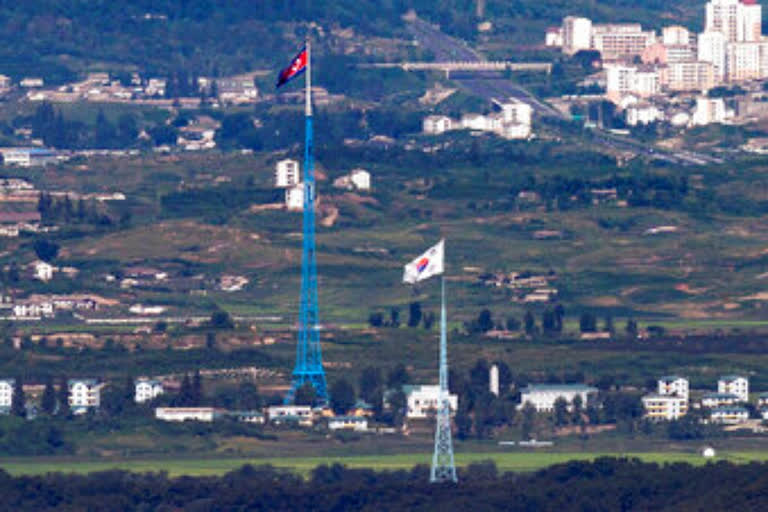Seoul:North Korea fired two short-range ballistic missiles toward its eastern waters on Friday, its latest weapons demonstration that came days after U.S. and South Korean warplanes conducted joint drills that North Korea views as an invasion rehearsal.
North Korea has conducted an unprecedented number of missile tests this year in what some experts call an attempt to bolster its weapons capability and pressure its rivals to make concessions such as sanctions relief in future negotiations. Recently, the North also claimed to have performed major tests needed to acquire its first spy satellite and a more mobile intercontinental ballistic missile capable of reaching the U.S. mainland.
South Korea’s military detected the two missile launches from North Korea’s capital region at around 4:32 p.m. on Friday. Japan said it also confirmed at least one missile launch by North Korea.
It wasn’t immediately clear exactly what kinds of missiles North Korea fired. South Korea’s military said the missiles traveled about 250 kilometers (155 miles) and 350 kilometers (220 miles) respectively before landing in the waters between the Korean Peninsula and Japan.
Japanese Vice Defense Minister Toshiro Ino said that one missile detected by Japan flew as far as 300 kilometers (180 miles) at a maximum altitude of 50 kilometers (30 miles). He said that missile might have showed an “irregular” trajectory, a possible reference to North Korea’s highly maneuverable, nuclear-capable KN-23 missile, which was modeled on Russia’s Iskander missile.
South Korea’s military called the launches “a grave provocation” that hurts international peace. It said South Korea will maintain a firm readiness and closely monitor North Korean moves in coordination with the United States. Ino also accused North Korea of significantly raising tensions with repeated weapons tests.
The launches could be a response to the U.S.-South Korean aerial military exercises near the Korean Peninsula on Tuesday, as North Korea has said its torrid run of testing activities in past months were meant as a warning over its rivals’ previous combined drills. Washington and Seoul have said their drills are defensive in nature, but North Korea calls them practice for an invasion.
The latest U.S.-South Korean drills drew B-52 nuclear-capable bombers and F-22 stealth fighter jets from the United States and other advanced warplanes from South Korea. The training was part of a bilateral agreement on boosting a U.S. commitment to defend its Asian ally with all available military capabilities, including nuclear, according to South Korea’s Defense Ministry.
